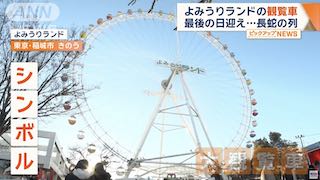OSAKA, Oct 10 (News On Japan) - Every autumn, the Kishiwada Danjiri Festival is held, and this time we’re taking a historical tour of the festival’s key sites!
At the Kishiwada Danjiri Museum, three actual danjiri floats from the Edo period, which were used in past festivals, are on display. These floats are adorned with intricate carvings, some of which transform in design when viewed up close! Visitors can also experience the thrill of standing atop the roof as a “daikugata” dancer or play the drums inside a danjiri. Additionally, the tour includes famous locations along the danjiri procession route, such as Kishiki Shrine and Kishiwada Castle.
Today, we’ve come to Kishiwada City, Osaka Prefecture. The streets behind us are impressive, aren’t they? The atmosphere is rich, reminiscent of scenes from the Edo period. We’re standing near the old Kishu Highway, close to Kishiki Shrine. This area, although not officially designated as a preservation district for traditional buildings, retains its charm and could easily be recognized as such.
The excitement of the Kishiwada Danjiri Festival, held on September 10th and 15th, still lingers in the air. Today, we’ll explore locations connected to the danjiri festival. This festival, known for its powerful shouts and the swift movement of the massive danjiri floats, brought crowds to Kishiwada this year once again.
Our investigation begins at the Kishiwada Danjiri Museum. Even outside the festival period, visitors can experience the reality of the festival here. The museum houses not only large danjiri floats but also smaller ornaments and decorations, like banners and hats. Visitors can closely observe the detailed carvings on the floats, which date back nearly 180 years to the Edo period. The danjiri floats are unpainted, allowing the craftsmanship to remain as it was, polished by hand without modern tools.
Among the historical floats is the Nomamachi Danjiri, created in 1901. The museum also houses an even older float, the Gokenyama Danjiri, which dates back over 200 years. In the Edo period, these floats had to pass through the castle gates, which were too low for the tall danjiri. To navigate this, the roofs of the floats would lower as they entered the castle grounds.
In addition to seeing these floats, visitors can experience the various roles involved in the festival, such as the dancers (daikugata) and those who pull the danjiri. It takes around 400 to 500 people to pull a single danjiri, and in the past, the number could reach up to 600 or 700. The floats dash at full speed through the streets, making the danjiri festival truly a thrilling event.
After exploring the museum, our tour continues to Kishiki Shrine, a key location along the danjiri procession route. This shrine not only plays a significant role during the festival but is also known as a place for prayers related to marriage. The shrine has strong connections to Kishiwada Castle, and the tradition of the festival is deeply intertwined with the town’s history.
Finally, we arrive at Kishiwada Castle, a symbolic structure that was first established in 1597. The current castle was rebuilt in 1954 after the original structure was destroyed by lightning in the Edo period. The castle grounds offer stunning views, and the surrounding gardens are designed in a style inspired by Chinese military strategy. Visitors can also view historical artifacts, including a rare portrait of Akechi Mitsuhide, one of the few surviving images of the famous samurai.
This historic tour offers a deeper understanding of the Kishiwada Danjiri Festival, allowing visitors to appreciate not only the festival's energy but also its cultural and historical significance. Why not explore the roots of the festival and experience its rich history for yourself?
Source: YOMIURI













